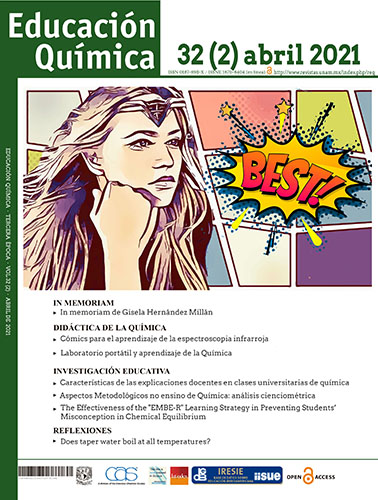The Effectiveness of the "EMBE-R" Learning Strategy in Preventing Students’ Misconception in Chemical Equilibrium
Contenido principal del artículo
Resumen
This study has been carried out aimed to compare the effectiveness of EMBE-R (Engage, Modification, building concept, Evaluation-Reflection) and verification strategies in preventing misconceptions in Chemical Equilibrium (CE). It involved two groups of senior high school students majoring in Natural Science of which the school is located in South Sulawesi, Indonesia. The groups have fulfilled the homogeneity requirements, each consisting of thirty-five students. The experiment group was taught with the EMBE-R Strategy and the other group was taught with the verification strategy. Students' misconceptions were identified using Three-tier Diagnostic Instrumen on CE (TT-DICE). The effectiveness of the two strategies is also examined based on students’ levels of Scientific Reasonability Capability (SRC). Students’ SRC was measured using the Classroom Scientific Reasoning Test (CTSR) developed by Lawson. The descriptive analysis used to compare the number of misconceptions held by students in both groups. The results of the study indicated that students who were taught with the EMBE-R strategy had four misconceptions, while the verification had nine-teen misconceptions. In addition, both in the two levels of SRC, i.e., high and low level, EMBE-R strategy is more effective in preventing misconceptions than verification strategy. Thus, the EMBE-R strategy is more effective in preventing misconceptions in CE than verification strategy.
Detalles del artículo

Educación Química por Universidad Nacional Autónoma de México se distribuye bajo una Licencia Creative Commons Atribución-NoComercial-SinDerivar 4.0 Internacional.
Basada en una obra en http://www.revistas.unam.mx/index.php/req.
